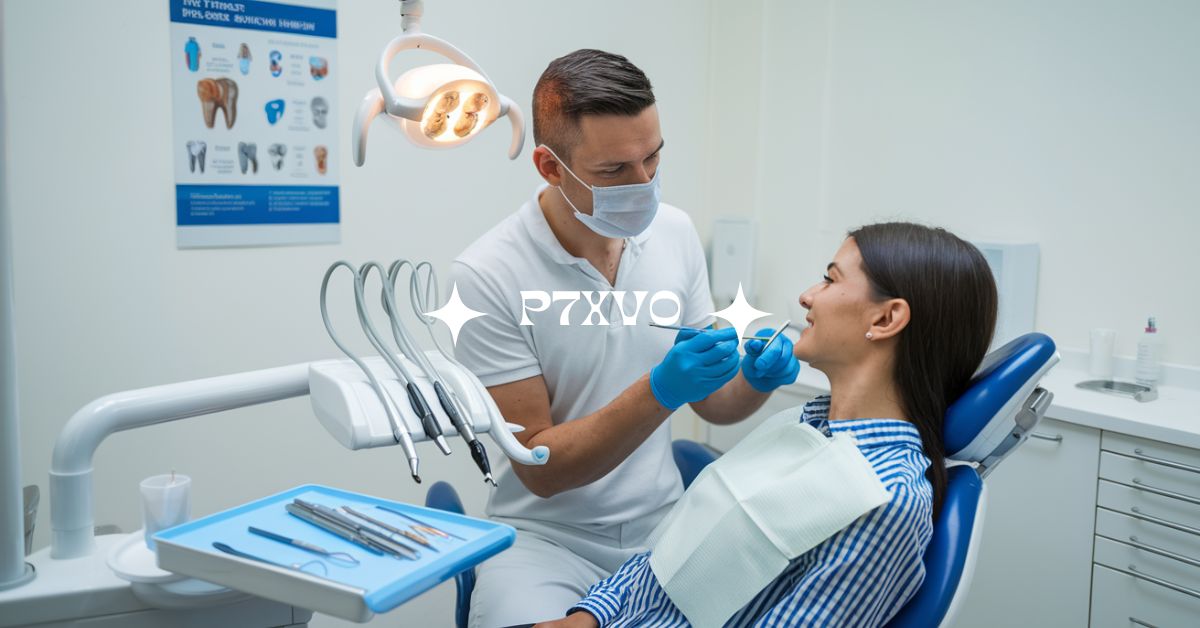Understanding “P7XV0”: A Comprehensive Guide for Patients and Healthcare Professionals
When navigating the complexities of healthcare in the United States, understanding billing codes and patient charge schedules is crucial. One such code that is relevant for patients requiring specialty care, particularly in the field of dentistry, is “P7XV0.”
This code is associated with specific charges that apply when a patient is referred to a network specialty periodontist or oral surgeon.
This article aims to provide an in-depth understanding of the “P7XV0” code, offering insights that go beyond existing information and making it easier for both patients and healthcare providers to navigate this aspect of the healthcare system.
What Is “P7XV0”?
Definition and Purpose
“P7XV0” is a billing code used in the healthcare system, particularly within dental specialty care. It is part of the Patient Charge Schedule, a document that outlines the costs associated with various healthcare services.
The code specifically applies to cases where a patient is referred to a network specialty periodontist or oral surgeon. This referral typically happens when a general dentist identifies a need for specialized care that goes beyond general dentistry’s scope.
Why Is It Important?
Understanding the “P7XV0” code is essential for patients because it directly impacts the cost of their care. By knowing what this code represents and how it is applied, patients can better anticipate their financial responsibilities.
Healthcare providers, on the other hand, can use this knowledge to ensure that billing is accurate and transparent, helping to maintain trust and clarity in patient-provider relationships.
The Role of Specialty Care in Dentistry
General Dentistry vs. Specialty Care
General dentists are equipped to handle a wide range of dental issues, from routine cleanings to minor restorative work. However, when a patient’s condition requires more specialized knowledge or procedures, a referral to a specialist may be necessary.
Specialty care in dentistry includes fields like periodontics (the treatment of gum disease) and oral surgery (procedures like tooth extractions or corrective jaw surgery).
When Is a Referral Necessary?
Referrals to specialists are typically made in cases where:
- Advanced Periodontal Disease: When gum disease has progressed beyond what can be managed by a general dentist.
- Complex Extractions: Such as impacted wisdom teeth or teeth that are difficult to remove.
- Dental Implants: When missing teeth need to be replaced with implants, which requires surgical expertise.
- Oral Pathology: If there is a need to diagnose or treat diseases related to the mouth, jaws, and related structures.
Understanding the Patient Charge Schedule
What Is a Patient Charge Schedule?
A Patient Charge Schedule (PCS) is a document provided by healthcare providers or insurance companies that outlines the costs associated with various medical or dental services. It is a crucial tool for patients as it helps them understand their financial obligations before undergoing any treatment.
How “P7XV0” Fits Into the PCS
The “P7XV0” code is specifically listed in the PCS for specialty care referrals. This means that when a patient is referred to a network specialty periodontist or oral surgeon, the charges associated with their care will be governed by the details outlined under this code. Understanding these charges can help patients prepare financially and avoid unexpected expenses.
Cost Implications of “P7XV0”
Factors Affecting the Cost
Several factors can influence the cost associated with the “P7XV0” code, including:
- Type of Procedure: More complex procedures like dental implants or jaw surgery will naturally incur higher costs.
- Location of the Specialist: Costs can vary depending on the geographical location of the specialist. Urban areas may have higher costs compared to rural areas.
- Insurance Coverage: The extent of coverage provided by a patient’s insurance plan will significantly affect out-of-pocket costs.
How to Estimate Costs
Patients can estimate their costs by consulting the Patient Charge Schedule provided by their healthcare provider or insurance company. It’s also advisable to discuss potential costs with both the referring dentist and the specialist to get a clearer picture of what to expect.
Navigating Insurance with “P7XV0”
Understanding Insurance Coverage
Insurance coverage for specialty dental care can vary widely. Some insurance plans may cover a significant portion of the costs associated with the “P7XV0” code, while others may only cover a small percentage, leaving the patient to pay the difference.
Tips for Maximizing Insurance Benefits
- Pre-Authorization: Before undergoing any procedure, check if pre-authorization is required by your insurance provider. This can prevent unexpected denials of coverage.
- In-Network vs. Out-of-Network: Ensure that the specialist you are referred to is within your insurance network. Out-of-network specialists often result in higher out-of-pocket costs.
- Consult Your Insurance Provider: Contact your insurance provider directly to understand the specifics of what is covered under your plan for the “P7XV0” code.
The Referral Process and “P7XV0”
How Referrals Work
When a general dentist determines that a patient requires specialized care, they will issue a referral to a network specialist. This referral is often a formal document that includes the patient’s medical history, the reason for the referral, and any relevant dental records.
Importance of Following the Referral Pathway
Following the correct referral pathway is crucial. Patients must ensure that the referral is made to a specialist within the network to take advantage of any cost savings outlined in the Patient Charge Schedule. Deviating from the network can result in significantly higher costs.
Common Procedures Associated with “P7XV0”
Periodontal Treatments
- Scaling and Root Planing: A deep cleaning procedure used to treat gum disease.
- Gum Grafting: A procedure to treat receding gums.
- Periodontal Surgery: In severe cases of gum disease, surgery may be required to clean infected areas under the gums.
Oral Surgery Procedures
- Tooth Extractions: Including wisdom teeth removal.
- Dental Implants: Surgically placed to replace missing teeth.
- Corrective Jaw Surgery: To correct misaligned jaws or congenital deformities.
Patient Rights and “P7XV0”
Understanding Your Rights
As a patient, you have the right to:
- Receive Clear Information: Your healthcare provider should explain the “P7XV0” code and any associated costs before treatment begins.
- Seek a Second Opinion: If you are unsure about a referral or the costs associated with “P7XV0,” you have the right to seek a second opinion.
- Access to Your Records: You are entitled to access your dental records and any documentation related to your referral and treatment.
What to Do If You Have Concerns
If you have concerns about the costs or the referral process, it’s important to address them with your healthcare provider. You can also reach out to your insurance company for clarification or to dispute any charges that you believe are incorrect.
How to Prepare for a Specialist Visit
Questions to Ask Your Specialist
- What specific procedures will be performed?
- What are the risks and benefits of these procedures?
- What are the expected outcomes?
- How should I prepare for the procedure?
- What will my recovery involve?
Preparing Financially
- Review the Patient Charge Schedule: Understand the costs associated with “P7XV0.”
- Discuss Payment Options: Ask if there are payment plans or financing options available.
- Check Your Insurance Coverage: Confirm what your insurance will cover and what you will need to pay out of pocket.
Conclusion
Understanding the “P7XV0” code and its implications is essential for patients requiring specialty dental care. By familiarizing yourself with the Patient Charge Schedule, the referral process, and potential costs, you can make informed decisions about your healthcare. Additionally, by communicating effectively with your healthcare provider and insurance company, you can ensure that you receive the care you need without unexpected financial burdens.
FAQs
1. What does the “P7XV0” code represent?
The “P7XV0” code is used in the healthcare system to indicate charges associated with referrals to a network specialty periodontist or oral surgeon.
2. How does “P7XV0” affect my dental costs?
The “P7XV0” code outlines specific charges for specialty care, which can impact your overall dental costs depending on the procedure and your insurance coverage.
3. What types of procedures are covered under “P7XV0”?
Procedures like periodontal treatments, tooth extractions, dental implants, and corrective jaw surgery are commonly associated with the “P7XV0” code.
4. How can I find out if my insurance covers “P7XV0”?
Contact your insurance provider directly to understand what portion of the costs associated with “P7XV0” will be covered under your plan.
5. Can I choose my own specialist for “P7XV0” procedures?
You can choose your specialist, but it’s advisable to select one within your insurance network to minimize costs.
6. What should I do if I’m unsure about a referral under “P7XV0”?
If you’re unsure about a referral, consider seeking a second opinion or discussing your concerns with your healthcare provider.
7. Are there any ways to reduce costs associated with “P7XV0”?
To reduce costs, ensure that your specialist is in-network, get pre-authorization for procedures, and explore payment plans if needed.
8. What are my rights as a patient regarding “P7XV0” charges?
You have the right to clear information about the costs, access to your records, and the option to seek a second opinion if you have concerns about the referral or associated charges.






